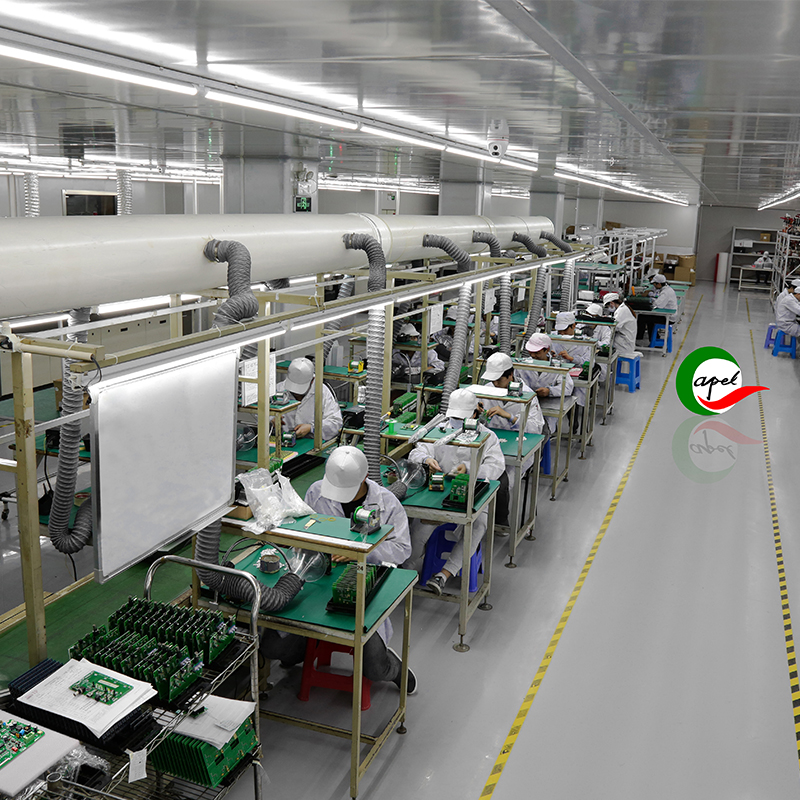Date: 2025-07-10
In electronics manufacturing, surface mount technology (SMT) assembly is one of the key processes for the successful production of electronic devices. SMT assembly plays an important role in the overall quality, reliability and efficiency of electronic products. In order to help you better understand and be familiar with PCB assembly , Capel will lead you to explore the basics of SMT refactoring. and discuss why it’s so important in electronics manufacturing.

SMT assembly, also known as surface mount assembly, is a method of mounting electronic components on the surface of a printed circuit board (PCB). Unlike traditional through-hole technology (THT), which inserts components through holes in the PCB, SMT assembly involves placing components directly onto the surface of the board. In recent years, this technology has gained widespread popularity due to its numerous advantages over THT, such as higher component density, smaller board size, improved signal integrity, and increased manufacturing speed.
1. Component placement: The first step in SMT assembly involves the precise placement of electronic components on the PCB. This is usually done using a pick-and-place machine that automatically picks components from a feeder and places them accurately on the board. Proper placement of components is critical to ensuring proper functionality and reliability of electronic equipment.
2. Solder paste application: After mounting components, apply solder paste (a mixture of solder particles and flux) to the pads of the PCB. Solder paste acts as a temporary adhesive, holding components in place prior to soldering. It also helps to create an electrical connection between the component and the PCB.
3. Reflow soldering: The next step in SMT assembly is reflow soldering. This involves heating the PCB in a controlled manner to melt the solder paste and form a permanent solder joint. Reflow soldering can be done using various methods such as convection, infrared radiation or vapor phase. During this process, the solder paste transforms into a molten state, flows onto component leads and PCB pads, and solidifies to form a strong solder connection.
4. Inspection and quality control: After the soldering process is completed, the PCB will go through strict inspection and quality control measures to ensure that all components are placed correctly and the solder joints are of high quality. Automated Optical Inspection (AOI) and X-ray inspection techniques are commonly used to detect any defects or anomalies in the assembly. Any discrepancies found during inspection are corrected before the PCB goes to the next stage of fabrication.
1. Cost efficiency: SMT assembly has a cost advantage over THT as it reduces overall production time and simplifies the manufacturing process. The use of automated equipment for component placement and soldering ensures higher productivity and lower labor costs, making it a more economically viable option for mass production.
2. Miniaturization: The development trend of electronic equipment is smaller and more compact equipment. SMT assembly enables the miniaturization of electronics by mounting components with a smaller footprint. This not only enhances portability, but also opens up new design possibilities for product developers.
3. Improved performance: Since SMT components are mounted directly on the PCB surface, shorter electrical paths allow for better signal integrity and enhance the performance of electronic devices. The reduction in parasitic capacitance and inductance minimizes signal loss, crosstalk and noise, improving overall functionality.
4. Higher component density: Compared with THT, SMT assembly can achieve higher component density on PCB. This means that more functions can be integrated into a smaller space, enabling the development of complex and feature-rich electronic devices. This is especially important in industries where space is often limited, such as mobile phones, consumer electronics, and medical equipment.
Based on the above analysis, understanding the basics of SMT assembly is essential for anyone involved in electronics manufacturing. SMT assembly offers numerous advantages over traditional through-hole technology, including cost efficiency, miniaturization capabilities, improved performance, and higher component density. As the demand for smaller, faster, and more reliable electronic devices continues to grow, SMT assembly will play an increasingly important role in meeting these demands.Shenzhen Capel Technology Co., Ltd. has its own PCB assembly factory and has provided this service since 2009. With 15 years of rich project experience, rigorous process flow, excellent technical capabilities, advanced automation equipment, comprehensive quality control system, and Capel has a professional expert team to provide global customers with high-precision, high-quality quick turn PCB Assemble prototyping. These products include flexible PCB assembly, rigid PCB assembly, rigid-flex PCB assembly, HDI PCB assembly, high-frequency PCB assembly and special process PCB assembly. Our responsive pre-sales and post-sales technical services and timely delivery enable our clients to quickly seize market opportunities for their projects.

Capel manufacturing PCBs since 2009. Professional technology and high-precision Printed Circuit Boards involved in Medical, IOT, UAV, Aviation, Automotive, Aerospace, Industrial Control, Artificial Intelligence, Consumer Electronics etc..